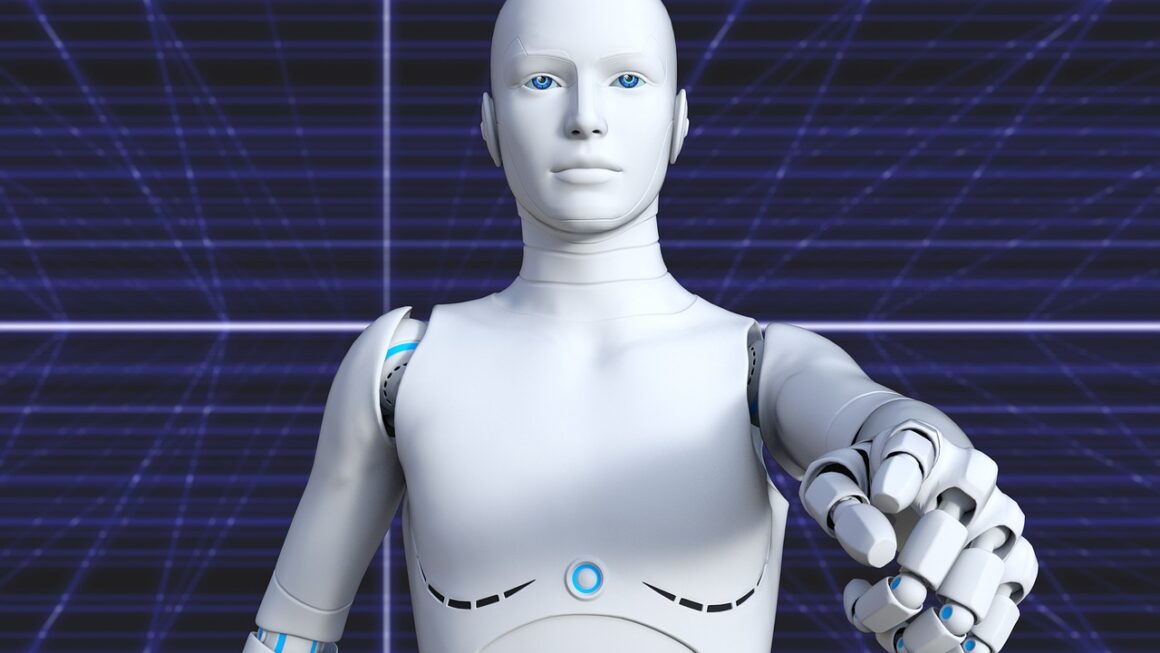AI research is no longer a futuristic concept confined to science fiction; it’s a vibrant, rapidly evolving field shaping the present and future of technology and countless industries. From self-driving cars to personalized medicine, the breakthroughs emerging from AI research labs are transforming how we live, work, and interact with the world. This blog post delves into the core areas of AI research, exploring current trends, practical applications, and the challenges researchers face in pushing the boundaries of what’s possible.
The Core Areas of AI Research
AI research encompasses a wide range of disciplines, each focusing on specific aspects of creating intelligent machines. Understanding these core areas is crucial for grasping the breadth and depth of the field.
Machine Learning
Machine learning is arguably the most well-known and widely applied branch of AI research. It focuses on developing algorithms that allow computers to learn from data without explicit programming.
- Supervised Learning: Algorithms learn from labeled data to make predictions or classifications. For example, training an algorithm to identify different types of animals based on images.
- Unsupervised Learning: Algorithms uncover hidden patterns and structures in unlabeled data. An example is clustering customers based on their purchasing behavior.
- Reinforcement Learning: Algorithms learn to make decisions by interacting with an environment and receiving rewards or penalties. A classic example is training an AI to play games like Go or chess.
- Practical Example: Imagine a hospital using machine learning to predict patient readmission rates. By analyzing historical patient data (age, medical history, previous diagnoses), the algorithm can identify patients at high risk of readmission, allowing the hospital to proactively intervene and improve patient outcomes.
Natural Language Processing (NLP)
NLP focuses on enabling computers to understand, interpret, and generate human language. This includes tasks like machine translation, sentiment analysis, and chatbot development.
- Text Analysis: Analyzing large amounts of text data to extract insights, identify trends, and understand customer opinions.
- Machine Translation: Automatically translating text from one language to another, facilitating communication across language barriers.
- Chatbots and Virtual Assistants: Developing conversational AI agents that can interact with users, answer questions, and provide assistance.
- Practical Example: Consider a customer service chatbot deployed on an e-commerce website. The chatbot uses NLP to understand customer inquiries, provide relevant information, and resolve issues, improving customer satisfaction and reducing the workload on human agents.
Computer Vision
Computer vision aims to enable computers to “see” and interpret images and videos. This involves tasks like object recognition, image segmentation, and facial recognition.
- Object Detection: Identifying and locating specific objects within an image or video.
- Image Classification: Assigning a category or label to an image based on its content.
- Facial Recognition: Identifying individuals based on their facial features.
- Practical Example: Self-driving cars rely heavily on computer vision to perceive their surroundings, identify pedestrians, traffic signals, and other vehicles, and make safe driving decisions.
Robotics
Robotics combines AI with mechanical engineering to create intelligent robots capable of performing complex tasks.
- Autonomous Navigation: Enabling robots to navigate their environment without human intervention.
- Object Manipulation: Developing robots that can grasp, move, and assemble objects.
- Human-Robot Interaction: Designing robots that can interact with humans in a safe and intuitive manner.
- Practical Example: In manufacturing, robots equipped with computer vision and AI can automate tasks like quality control, identifying defects in products and removing them from the production line.
Current Trends in AI Research
The field of AI research is constantly evolving, driven by technological advancements and the growing demand for intelligent solutions. Here are some of the key trends shaping the future of AI:
Deep Learning Advancements
Deep learning, a subfield of machine learning based on artificial neural networks with multiple layers, has achieved remarkable success in recent years. Researchers are continually developing new deep learning architectures and techniques to improve performance and address limitations. Recent advancements include:
- Transformer Networks: Revolutionizing NLP, enabling more accurate and efficient language models.
- Generative Adversarial Networks (GANs): Creating realistic images, videos, and other content.
- Graph Neural Networks (GNNs): Analyzing complex relationships and structures in data, with applications in social network analysis and drug discovery.
Explainable AI (XAI)
As AI systems become more complex, it’s increasingly important to understand how they make decisions. XAI aims to develop AI models that are transparent, interpretable, and explainable, allowing users to understand the reasoning behind their predictions.
- Feature Importance: Identifying the most important features that influence a model’s predictions.
- Decision Trees: Representing the decision-making process in a hierarchical tree structure.
- SHAP Values: Quantifying the contribution of each feature to a model’s output.
- Why XAI matters: In critical applications like healthcare, understanding why an AI system made a particular diagnosis is crucial for building trust and ensuring responsible use.
Federated Learning
Federated learning enables AI models to be trained on decentralized data sources without sharing the data itself. This is particularly useful in situations where data privacy is a concern.
- Data Privacy: Protecting sensitive data by keeping it on local devices or servers.
- Scalability: Training models on large, distributed datasets.
- Personalization: Tailoring models to individual users or devices.
- Practical application: Training a mobile app’s language model on users’ individual usage patterns without collecting their actual text data.
Challenges in AI Research
Despite the impressive progress in AI research, numerous challenges remain. Addressing these challenges is crucial for realizing the full potential of AI.
Data Requirements
Many AI algorithms, particularly deep learning models, require vast amounts of data for training. Obtaining and preparing this data can be a significant hurdle.
- Data Acquisition: Gathering sufficient and relevant data.
- Data Labeling: Annotating data with labels for supervised learning.
- Data Bias: Ensuring that data is representative and free from bias.
Computational Resources
Training complex AI models can require significant computational resources, including powerful GPUs and specialized hardware.
- High Computing Costs: Training models on expensive hardware.
- Energy Consumption: Reducing the energy footprint of AI computations.
- Scalability Issues: Handling the computational demands of large-scale models.
Ethical Considerations
AI raises a number of ethical concerns, including bias, fairness, and accountability. Addressing these concerns is essential for ensuring that AI is used responsibly and ethically.
- Algorithmic Bias: Preventing AI models from perpetuating or amplifying existing biases.
- Privacy Concerns: Protecting sensitive user data.
- Job Displacement: Mitigating the potential impact of AI on employment.
The Future of AI Research
The future of AI research is bright, with numerous exciting possibilities on the horizon. We can expect to see continued advancements in deep learning, NLP, computer vision, and robotics, leading to even more powerful and intelligent AI systems. Some key areas of focus include:
- Artificial General Intelligence (AGI): Developing AI systems that can perform any intellectual task that a human being can.
- Neuro-inspired AI: Designing AI models based on the structure and function of the human brain.
- Quantum Computing for AI: Leveraging the power of quantum computers to accelerate AI research and development.
Conclusion
AI research is a dynamic and transformative field that is rapidly changing the world. By understanding the core areas of AI, current trends, and challenges, we can better appreciate the potential of AI and its impact on society. Continued investment in AI research is crucial for unlocking new possibilities and ensuring that AI is used for the benefit of all. This field promises innovative solutions to some of humanity’s most pressing problems, from healthcare and climate change to education and economic development. It’s an exciting time to witness and participate in the evolution of artificial intelligence.




